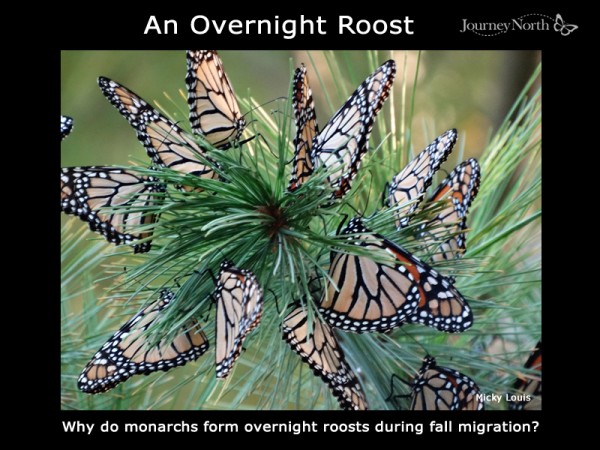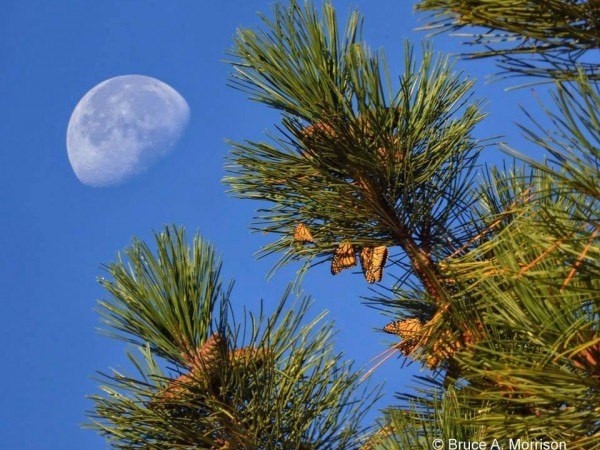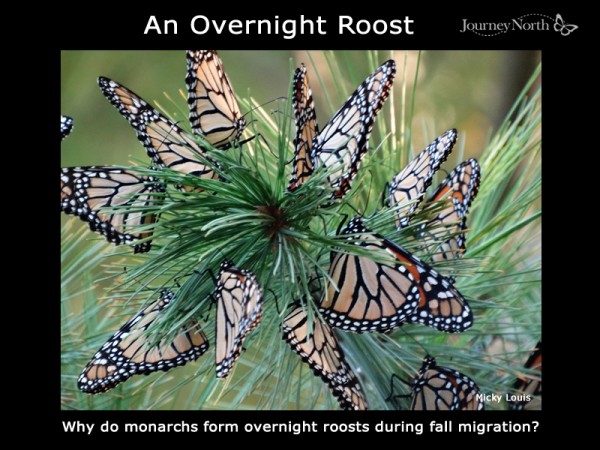Why Overnight Roosts?
Teaching Suggestions
Scientists have many questions about where, how, and why monarchs form roosts during fall migration. Find out what is known about overnight roosts and explore the many mysteries that remain.
Driving Question: What can we learn about fall migration by studying overnight roosts?
For use with Photo Gallery: Why Overnight Roosts?
Set the Stage for Learning
1. Preview title and featured photo. Ask questions as students view the first image:
- What are the monarchs doing?
- When do monarchs gather in clusters?
- Why do you think so many butterflies are gathered together in these branches?
2. Preview all images in the photo gallery. As students take a photo-walk through the images, predict and wonder based on details in photos.
3. Preview vocabulary using word cards. Predict how the words may be related to the question:
- What can we learn about fall migration by studying overnight roosts?
Revisit for Understanding
1. Reread the selection. Place students in small groups to reread the text. Challenge them to mark up the text by identifying fact statements (F), questions (?), and quotes (QT). Encourage them to jot notes in the margin to capture their own thoughts and questions with the information they read.
2. Use graphic organizers to explore the text:
- On the 5 W's and H chart, have students work with a partner to brainstorm and organize questions related to monarch roosts.
- On the FQQ chart, have students record fact sentences, questions, and observers' quotes found in the text. Provide time for a class discussion to share discoveries, questions, and overall responses.
3. View journal. Use the journal page to share discoveries, assess understanding, and inspire students to explore ways to extend learning.
4. Study fall migration maps. Use the journal page to help students describe and compare data shown on All Sightings and Overnight Roost maps.
Wrap Up
1. Ask assessment and reflection questions.
Encourage students to summarize their learning and think beyond the text:
- Where do monarchs form their roosts?
- Why do you think roosting monarchs flash their wings?
- Why do you think monarchs form roosts during fall migration?
- How do observers who report sightings help scientists learn about the fall migration of monarchs?
2. Read published findings.
Journey North has been mapping fall roosts since 2002. The data were recently published in a scientific paper:



